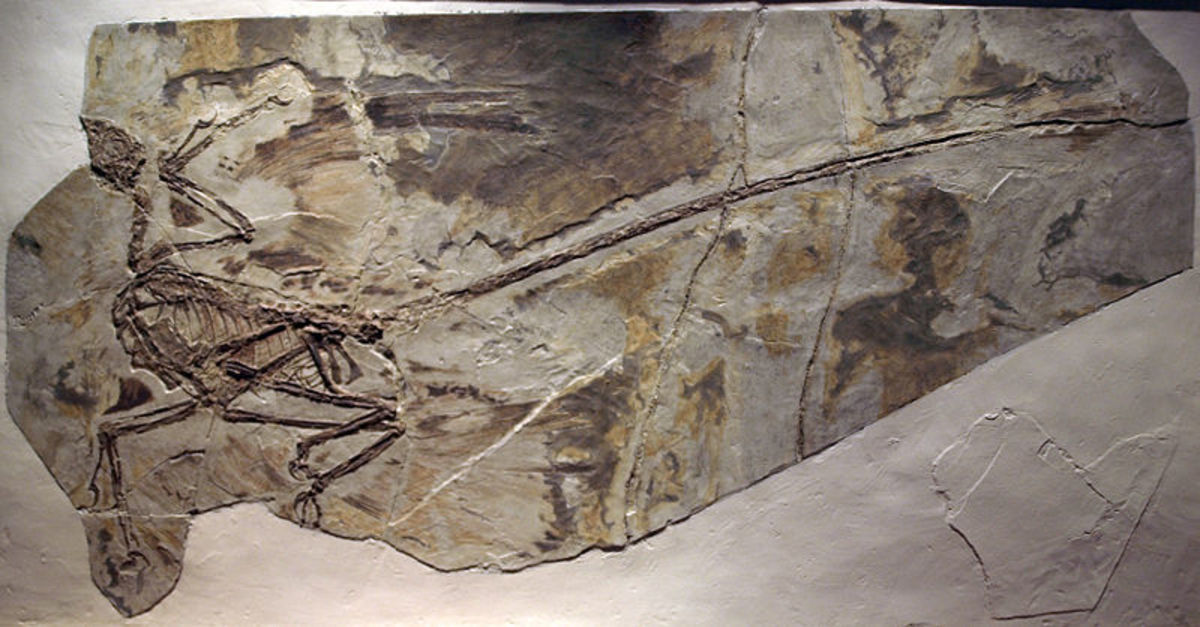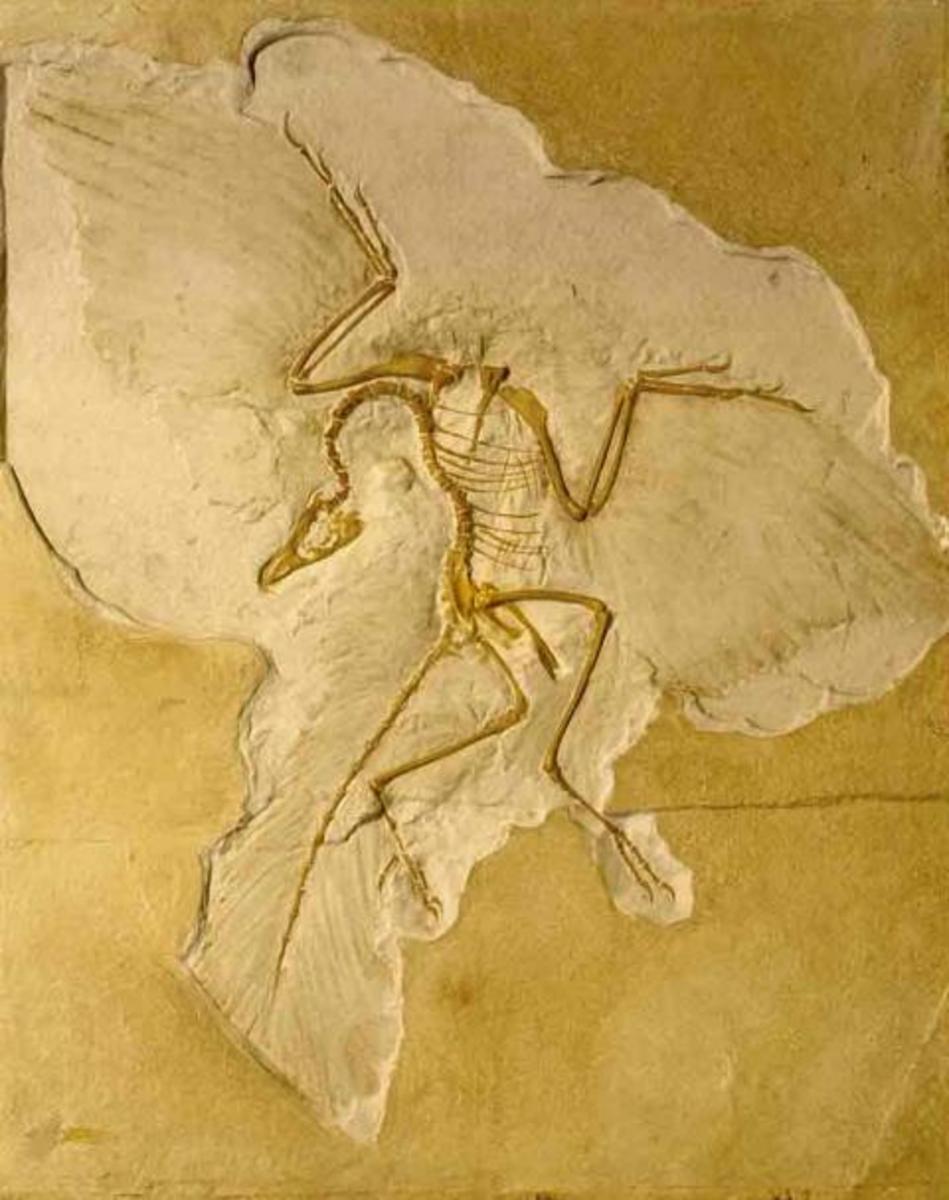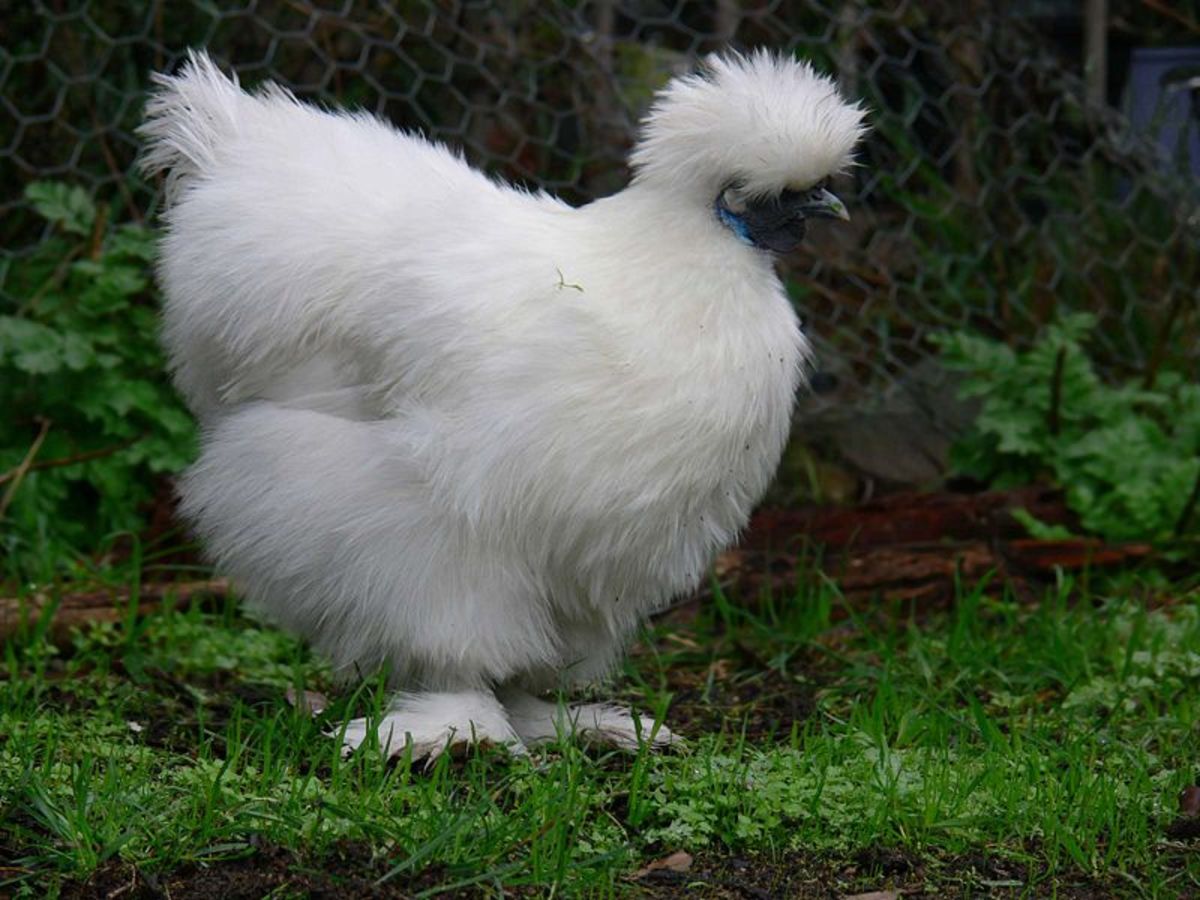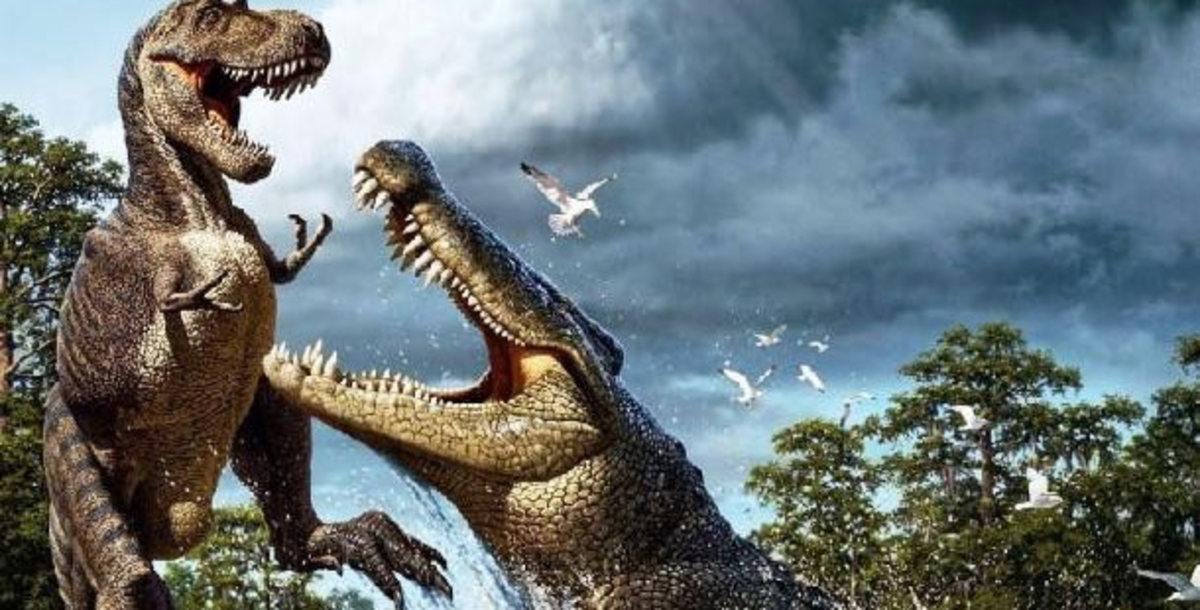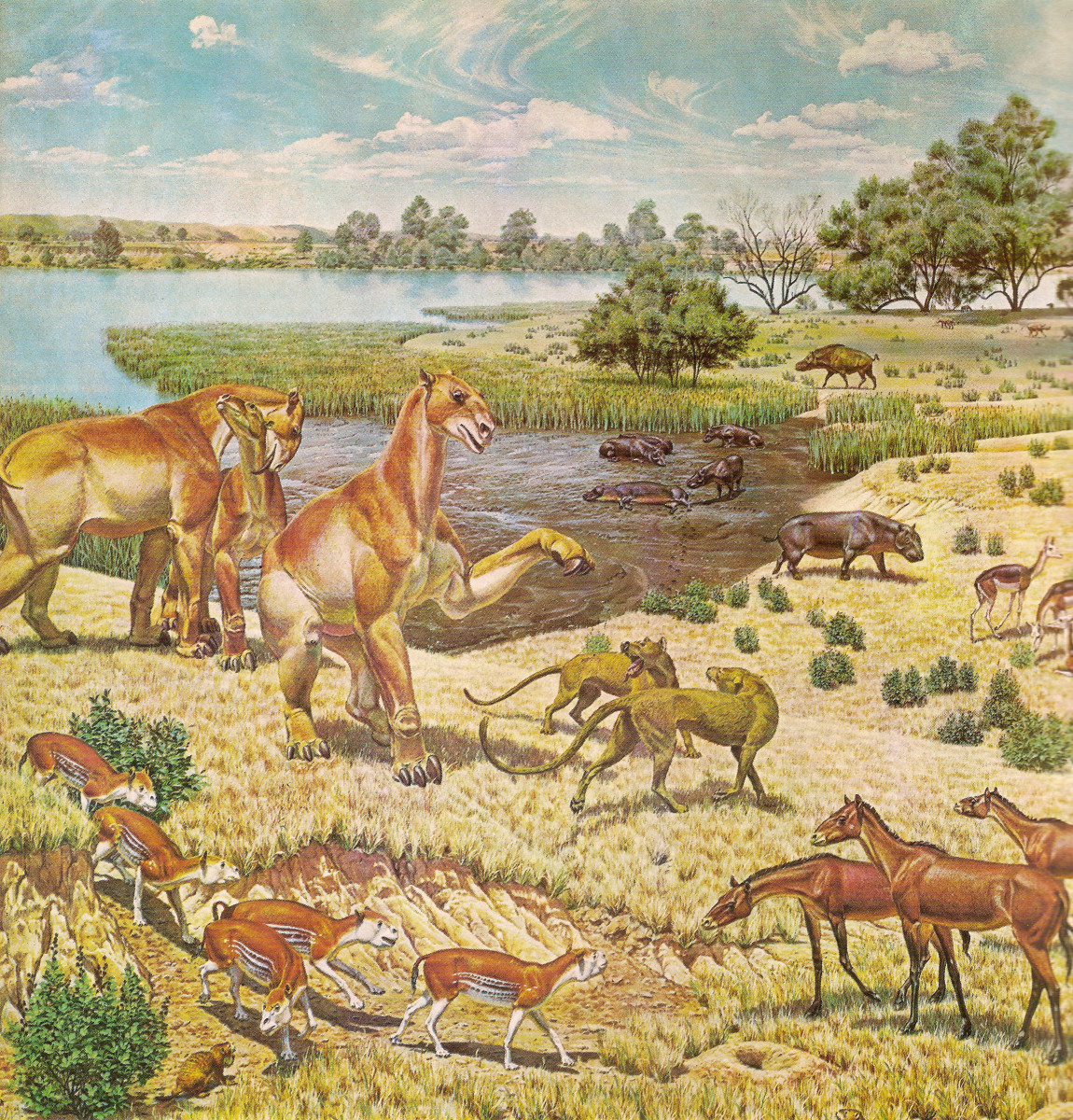- HubPages»
- Education and Science»
- Life Sciences»
- Paleontology
Pigment of the Imagination?
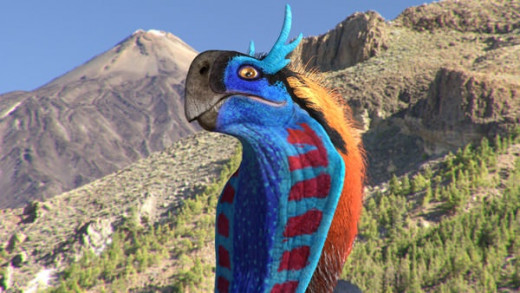
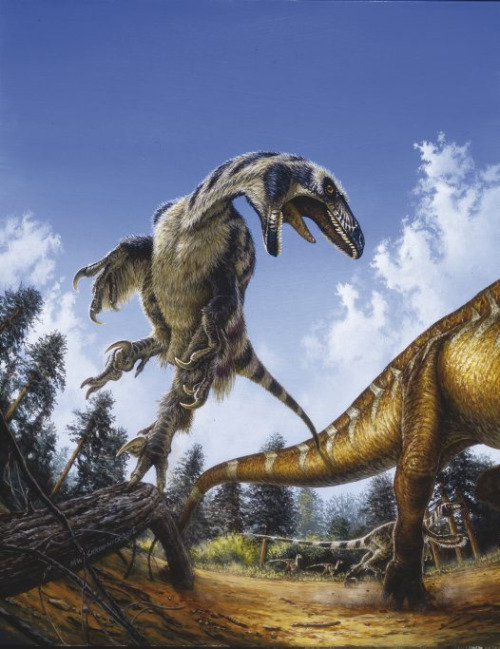
Fifty years ago, paleontologists uncovered the first well-preserved fossils of Deinonychus, launching a period of rigorous re-examination, numerous groundbreaking discoveries, and renewed public interest in dinosaurs and other long-extinct creatures. This period--which continues today--is often called the Dinosaur Renaissance. One question, however, remained unanswered by this modern scientific revolution: What color were these animals?
Scales, feathers, and fur rarely fossilize at all, and when they do, are discolored from millions of years of burial. Thus, we've had to rely on our imaginations--along with the color patterns of existing animals--to attempt to answer this unsolvable mystery. During the nineteenth and most of the twentieth century, when dinosaurs were regarded as big, dim reptiles, many paleoartists depicted them as drab creatures similar to elephants or alligators. During the Dinosaur Renaissance, as people grew to view them as more complex, visually-oriented animals, paleoartists gave their dinosaurs brighter and bolder colors and markings.
In the past few years, paleontologists have rigorously examined fossils of marine reptiles, birds, and non-avian feathered dinosaurs which might finally reveal the original color of these animals in life. In all these cases, the animals' melanosomes--the pigment-bearing organelles in skin, feathers, and hair--survived fossilization. Many of these fossils, in fact, suggest that color played in an important role in the survival and behavior of these creatures.
Solar-Powered Sea Monsters

Melanosomes come in two forms: Phaemelanosomes, which contain yellow-to-reddish pigments, and eumelanosomes, which pertain to gray, brown, and black.
In January of this year, a group of Scandinavian, English, and American scientists announced that the discovery of eumelanosomes in the fossilized skin of three unrelated marine reptiles--an ichthyosaur from the Early Jurassic (about 190 million years ago); a mosasaur from the Late Cretaceous (85 MYA); and a leatherback turtle from the Paleocene (55 MYA). Led by Johan Lindgren of Lund University, this team of scientists believe that both the mosasaur and the turtle had a very dark, if not black, topside and a lighter underbelly. A dark topside would have helped both animals soak in heat from the Sun, while also shielding them from ultraviolet radiation. The pale underside, meanwhile, would have camouflaged each reptile from potential attackers below, aided by the glare of the sun's rays.
Black scales would have also aided the insulation of the ichthyosaur. Unlike mosasaurs or sea turtles, many Jurassic ichthyosaurs seem to have been deep-sea predators, using their enormous eyes to seek out fish and ammonites. Following this line of reasoning, Lindgren's team believes that the ichthyosaur was completely black, an adaptation that would have helped it take in and conserve additional heat while staying hidden from its prey in the abyss.
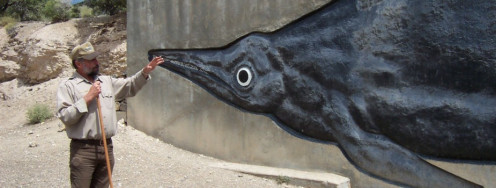
I should point out that none of the articles reporting on this story mentioned the species of the three marine reptiles in question or whether Lindgren's team used more than one fossil from each family in their study. While the modern leatherback turtle does have a black top and a white bottom, it may be premature to assume that all mosasaurs were half-black and all ichthyosaurs were completely black based on this one study.
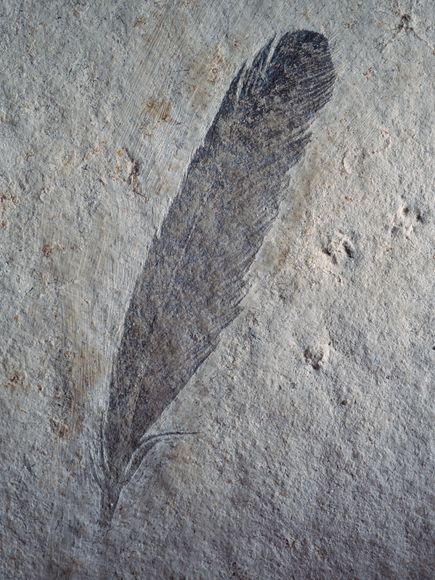
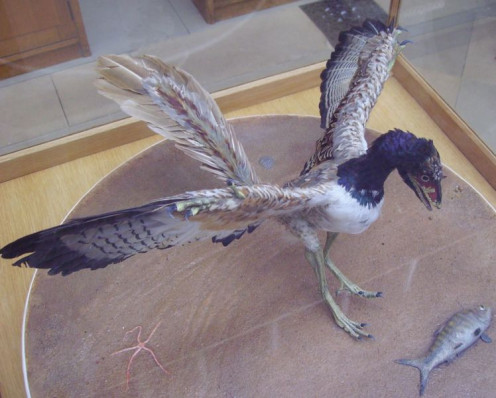
Flying Colors
In 2011, a team of American and German scientists found traces of black in another fossil dating back to the Jurassic. In this case, eumelanosomes were found in an isolated wing feather belonging to Archaeopteryx, long regarded as the missing link between feathered dinosaurs and birds. For decades, scientists have debated whether this creature was capable of flight. According to one of the study's participants, Brown PhD candidate Ryan Carney, the discovery of black feathering in Archaeopteryx suggested that it could. He stated that eumelanosomes "would have given the feathers additional structural support" and would have "been advantageous during this early stage of dinosaur flight." Even some white birds like seagulls, Carney pointed out, have wings tipped with strong black feathers, which perform the same function.
Last year, another study on Archaeopteryx melanosomes, conducted by scientists in Manchester, England, gave us an even clearer picture of this ancient bird. Led by paleontologist Phillip Manning and earth scientist Roy Wogelius, the team X-rayed two Archaeopteryx fossils and found that the animal had both black and white feathering. Like seagulls, the edges and tips of the wings were black, leaving Carney's contention unblemished for now.
The Case of Tuxedo-less Penguin
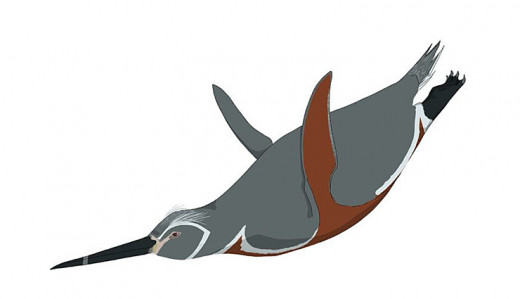
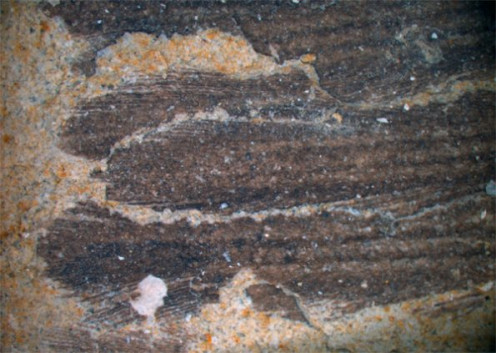
The function of feather color is less clear-cut in the case of a bird that couldn't have been more different from Archaeopteryx. Discovered in 2010, Inkayacu was an early penguin that inhabited Peru during the Late Eocene (roughly 36 MYA). Unlike present-day penguins, it had a very long, straight bill and--at nearly five feet tall and over a hundred pounds--dwarfed the largest living member of the family, the emperor penguin of Antarctica. But what really sets Inkayacu apart from other penguins was its pigmentation: Based on the melanosomes preserved in its left wing, Inkayacu's feathers were gray and a ruddy brown in life.
Some penguin species are brown and gray as newborn chicks and juveniles. The type specimen of this prehistoric penguin, however, appears to have been an adult. Until we discover fossils revealing its full plumage, the function behind the color of Inkayacu's feathers--if any at all--remains a mystery. Like other marine animals, the black-and-white plumage of modern penguins camouflages them from above as well as below, shrouding them from prey and predator alike. Seals, the main predators of penguins, were diversifying at around the same time that Inkayacu swam off the coast of South America. While we'll never know for certain, this penguin's more flamboyant coloration may have made it a more obvious target to these predators and further doomed the survival of the species, already threatened by the drastic climate change that marked the end of the Eocene.
True Hue?
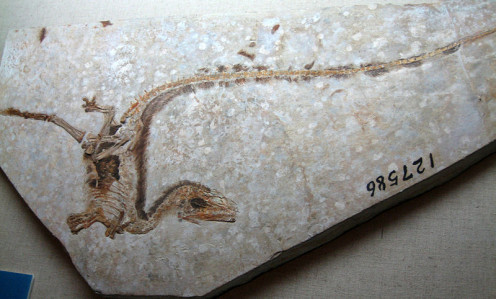
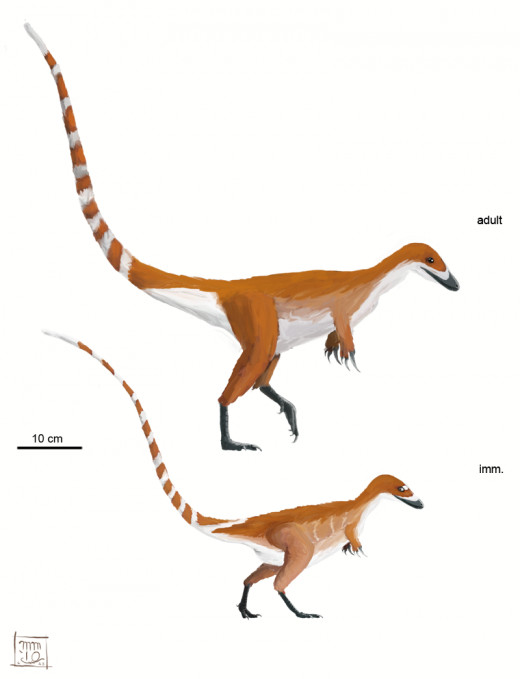
Since the 1990s, dozens of feathered, non-avian theropod dinosaurs have been described from the province of Liaoning in northeastern China. The first of these to be described was Sinosauropteryx, a compsognathid from the Early Cretaceous (125 MYA). In 2010, this creature also became the first non-avian dinosaur preserved with melanosomes. Based on the high presence of phaemelanosomes, Sinosauropteryx's downy feathers were primarily reddish brown and had a band of white stripes running down its tail. The latter feature may have served to break up the animal's profile, just as the stripes of a modern tiger make it less conspicuous to its prey.
In the years since then, melanosomes have been found in other feathered dinosaur fossils from Liaoning. For instance, the Jurassic troodontid Anchiornis was found with both eumelanosomes and phaemelanosomes: While the former meant this dinosaur's body feathers were mostly gray and black, the latter would have reddened many of the feathers around its face. The type specimen of Anchiornis also had a large, flamboyant headdress--perhaps limited to adult males to impress females--which was also red.
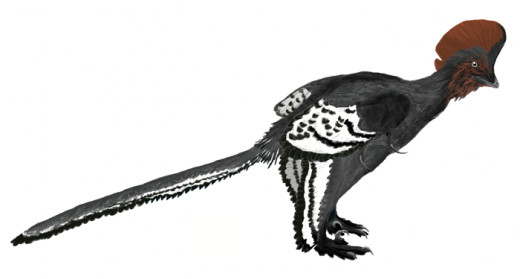
Yet not every scientist agrees with the color interpretation of these dinosaurs. Last year, Maria McNamara of the University of Bristol simulated the process of fossilizing feathers by briefly placing modern bird feathers in an autoclave, a device which sterilizes lab tools through extreme heat and pressure. The result was that the feathers' melanosomes shrank considerably and that brighter colors--such as green or blue--turned black.
Her colleague Jakob Winther--the molecular paleontologist whose studies of dinosaur and ancient birds melanosomes yielded many of the aforementioned color schemes--responded to her study, insisting he was aware of the melanosomes' shrinkage and that it didn't affect his reconstructions that radically. Nonetheless, McNamara warned that until paleontologists achieve a better understanding of how fossilization affects melanosomes, "there's really no point in attempting to reconstruct colour of feathers based on melanosomes alone."
For paleoartists, however, running the risk of inaccuracy is inevitable whenever they give their extinct subjects color. Taking a leap based on evidence--however scant or puzzling--can only generate a lasting interest and discussion of science.
SOURCES:
Bhanoo, Sindya N. "Black Dinosaur Feather May Have Helped Archaeopteryx Fly." New York Times, 30 January 2012
Choi, Charles. "Winged Dinosaur Wore Plumage of Black Feathers." LiveScience, 24 January 2012
"Fossils Reveal True Color of Mosasaurs, Ichthyosaurs, Prehistoric Turtles." Sci-News.com, 9 Jan 2014
Gannon, Megan. "True Color of Dinosaur Feathers Debated." LiveScience, 29 March 2013
Ghose, Tia. "Archaeopteryx Were Black & White, Study of 'Dinobird' Fossil Shows." The Huffington Post, 12 June 2013
Henry, Denise. "UA researchers: Penguins’ evolution isn't so black-and-white." The University of Akron Communications and Marketing, 27 Sep 2010
Kaplan, Matt. "Fossil feathers reveal dinosaurs' true colors." Nature, 27 Jan 2010
Ksepka, Daniel. "Three Discoveries, Part III: Fossil Color." fossilpenguins.wordpress.com (March of the Fossil Penguins), 11 Oct 2010
Lemonick, Michael. "When Dinosaurs Came in Color." Time, 12 Feb 2014
Morelle, Rebecca. "Colour of ancient sea creatures revealed." BBC News, 8 Jan 2014
North Caroline State University. "Fossilized giant penguin Inkayacu paracasensis feathers reveal color, feather structure of ancient birds." www.sciencecodex.com, 30 Sep 2010
Yong, Ed. "A shiny dinosaur--four-winged Microraptor gets colour and gloss." Discover Magazine, 8 March 2012
Yong, Ed. "Dust-up over dinosaurs' true colours." Nature, 27 Mar 2013
Yong, Ed. "What colours were dinosaur fossils?" scienceblogs.com, 27 Jan 2010

